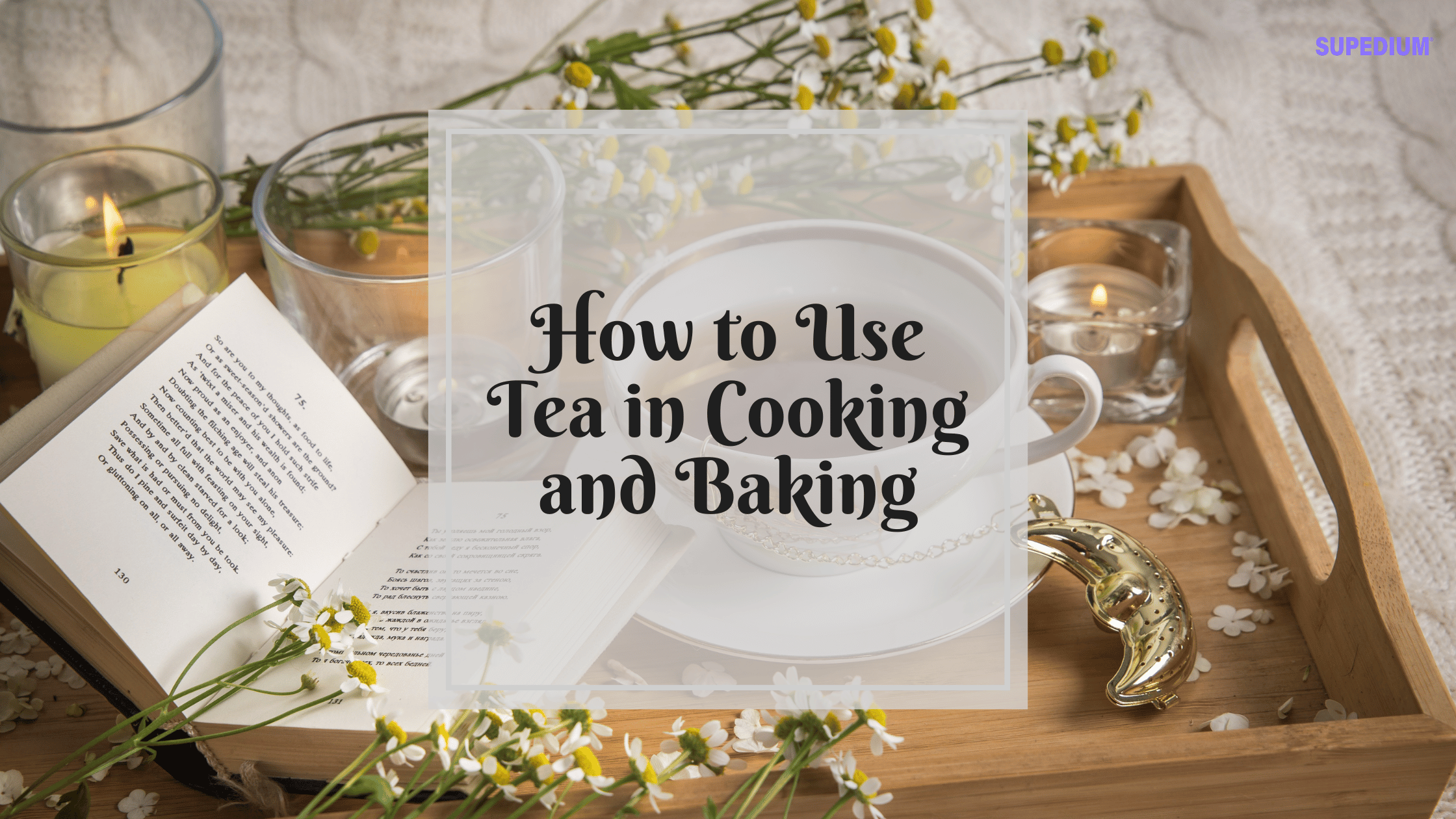Table of Contents
![]()
Introduction
Tea is not just a beverage; it’s a versatile ingredient that can elevate your culinary creations. With a rich history spanning centuries, tea has been used in various cultures to enhance flavors in both savory and sweet dishes. This guide explores the myriad ways to incorporate tea into your cooking and baking, helping you discover new flavors and techniques.
Types of Tea
Black Tea
Black tea is robust and rich, making it an excellent choice for cooking. Varieties like Assam and Earl Grey can impart deep flavors. Black tea works wonderfully in marinades for meats, adding a hint of tannins that can tenderize and infuse the dish with its distinctive taste.
Green Tea
Green tea, especially Matcha, has gained popularity for its health benefits and vibrant color. Its grassy, slightly bitter notes make it ideal for both sweet and savory recipes. Matcha can be used in everything from cakes to salad dressings, providing a unique twist.
Herbal Tea
Herbal teas, such as chamomile or hibiscus, offer a caffeine-free option for culinary exploration. Their diverse flavors can enhance desserts or be used to create refreshing beverages. Herbal teas can be steeped into syrups or used in glazes to add depth to dishes.
Oolong and White Tea
Oolong tea, with its floral and fruity notes, and white tea, known for its delicate flavor, can be used in more subtle recipes. They are perfect for light sauces or infused desserts, allowing the nuanced flavors to shine through.
Techniques for Using Tea in Cooking
Infusion
Infusion is one of the most straightforward methods for incorporating tea into your cooking. Steeping tea leaves in liquids like stocks, broths, or milk allows you to extract flavors. For instance, a tea-infused broth can serve as a base for soups, providing an unexpected depth of flavor.
Tea Leaves as Seasoning
Tea leaves can also be used as a seasoning. By drying and grinding them, you can create a fine powder that can be incorporated into marinades, rubs, or spice mixes. For example, using crushed green tea leaves in a rub for grilled chicken can add a refreshing touch.
Tea Broth and Soups
Creating a tea broth is an innovative way to introduce tea into your soups. Start by steeping your chosen tea in hot water and then combining it with vegetables, proteins, and seasonings. A simple miso soup can be elevated with a hint of green tea, providing an extra layer of complexity.
Tea in Sauces and Dressings
Tea can be an excellent base for sauces and dressings. You can create reductions using brewed tea, adding ingredients like soy sauce or vinegar to create a flavorful glaze. A salad dressing made with Earl Grey steeped in olive oil and balsamic vinegar can bring a new dimension to your salads.
Techniques for Using Tea in Baking
Tea-Infused Breads
Infusing breads with tea is a delightful way to add flavor. You can substitute some of the liquid in your bread recipe with strong tea, such as chai or matcha. This not only enhances flavor but also adds a beautiful color.
Cookies and Bars
Tea can be incorporated into cookie and bar recipes for a unique flavor twist. For example, Earl Grey shortbread cookies are a delicious treat that showcases the aromatic qualities of the tea. Simply replace part of the flour in a standard shortbread recipe with finely ground tea leaves.
Cakes and Muffins
Adding tea to cakes and muffins can create a rich, complex flavor profile. Matcha can be folded into cake batter, while chai spices can be mixed into muffins. Additionally, tea-infused frostings can enhance your baked goods even further.
Puddings and Desserts
Tea is also perfect for desserts like puddings and custards. You can create a tea-infused crème brûlée by steeping your favorite tea in the cream before mixing it with eggs and sugar. This will impart a delicate flavor that will surprise and delight your guests.
Flavor Pairings and Complementary Ingredients
Sweet Pairings
When using tea in sweet dishes, consider pairing it with complementary flavors. Sweeteners like honey or maple syrup can enhance the natural sweetness of tea, while fruits like citrus or berries can provide a refreshing contrast.
Savory Pairings
In savory dishes, tea can pair well with various ingredients. For example, black tea works beautifully with meats, while green tea can complement seafood. Experimenting with herbs and spices can also lead to unique flavor combinations.
Experimenting with Spices and Herbs
Don’t hesitate to mix tea with spices and herbs. A blend of chai spices, for instance, can elevate both sweet and savory dishes. Try adding ground tea to spice blends to create a custom flavor profile.
Tips for Successful Tea Cooking and Baking
Choosing the Right Tea for the Dish
Selecting the appropriate tea for your recipe is crucial. Stronger teas like black tea are best for hearty dishes, while delicate teas like white tea work better in lighter applications.
Balancing Flavors
When incorporating tea, it’s essential to balance flavors. Too much tea can overpower other ingredients. Start with small amounts and adjust according to your taste preferences.
Adjusting Steeping Times
Different teas require different steeping times. Be mindful of this, as over-steeping can lead to bitterness. Experiment to find the perfect steeping time for each application.
Experimentation and Personal Taste Preferences
Cooking with tea is an opportunity for creativity. Don’t hesitate to experiment with different types of tea and quantities to discover what suits your palate. Personal taste plays a significant role in culinary success.
Conclusion
Tea is a remarkably versatile ingredient that can transform your cooking and baking. From savory dishes to sweet treats, its unique flavors can enhance your culinary creations. So, embrace the art of cooking with tea, and let your imagination guide you through the exciting possibilities.
Share This





Be the first to comment